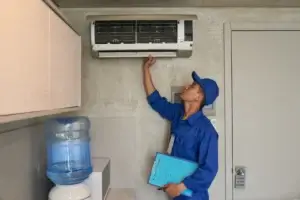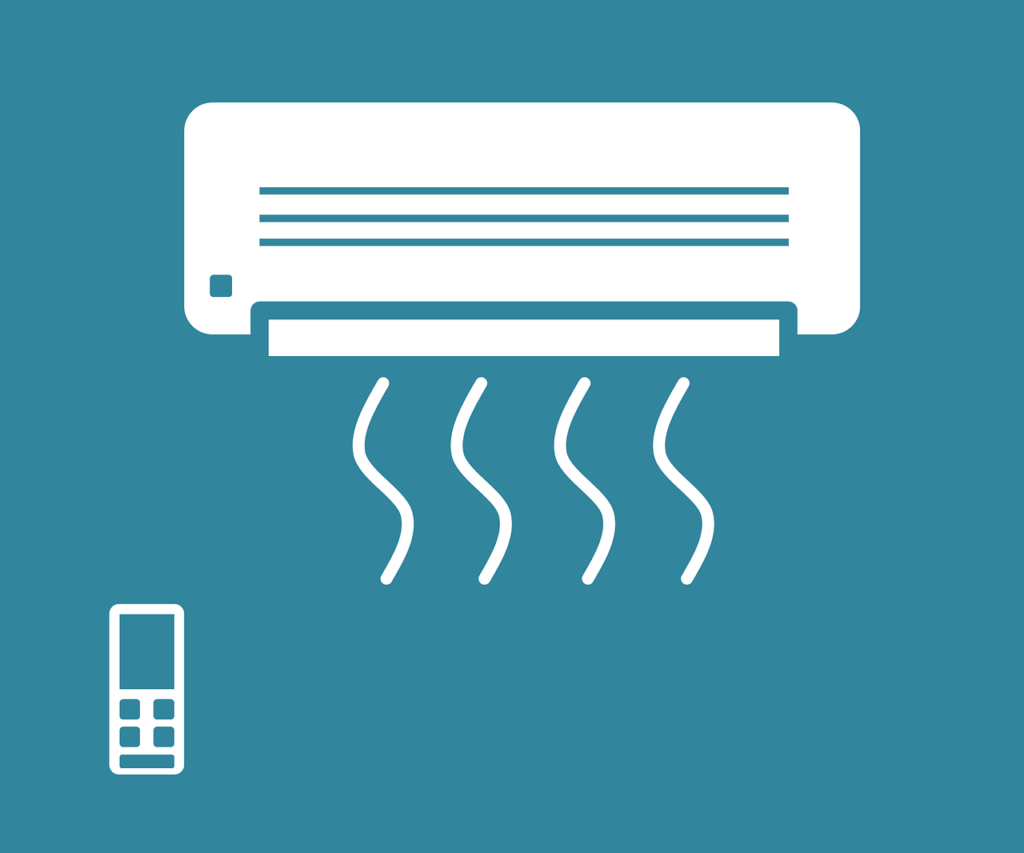Is your air conditioning unit working harder than necessary? You may find that some issues with AC pipe insulation are quietly increasing your energy bills as well as changing the cooling performance. We offer some actionable, practice tips and tactics to help care for your insulation, head-off an unpleasant and costly repair, and ensure the cooling system efficiency stays intact for years to come.
Most homeowners ignore their AC pipe insulation until a problem appears, which is a shame since advanced care can make a dramatic difference in whether problems appear. Monthly overview checks and seasonal maintenance can prevent most insulation problems that allow you to keep the cooling system operating instead of breaking down.
Understanding the Importance of AC Pipe Insulation
What Is AC Pipe Insulation and How It Works
AC pipe insulation refers to the layer of protective material wrapped around the refrigerant lines that connect your indoor and outdoor units of an air conditioning (AC) system. AC insulation acts as a barrier to prevent heat transfer between the cold refrigerant pipes and the warm air outside/inside. If the insulation is done correctly, the refrigerant temperatures will be kept consistent as it travels through the cooling cycle.
AC insulation will also prevent condensation build-up that can lead to mold, mildew and water damage. Most systems are insulated with foam or rubber insulation materials designed specifically to insulate piping and minimize heat gain or loss. We recommend evaluating the insulation quality and design during every service visit to ensure proper functionality at AC Maintenance UAE.
Why Proper Insulation Matters for Cooling Efficiency
If your unit is not insulated well enough, it will lose cooling capacity (it loses cooling capacity sooner than refrigerant arrives to the indoor coils) and the compressor will run longer cycles (meaning it will pull in more electricity) than it should. Studies have shown that damaged insulation can reduce system efficiency by 20 to 240 percent!
Proper insulation provides the temperature differential necessary to move heat away from space and is crucial in keeping the warm air from warming the cold pipes before it gets them into space. Insulation becomes critical in hot climates since ambient temperatures put a stress on cooling systems to run for longer cycles in the summer.
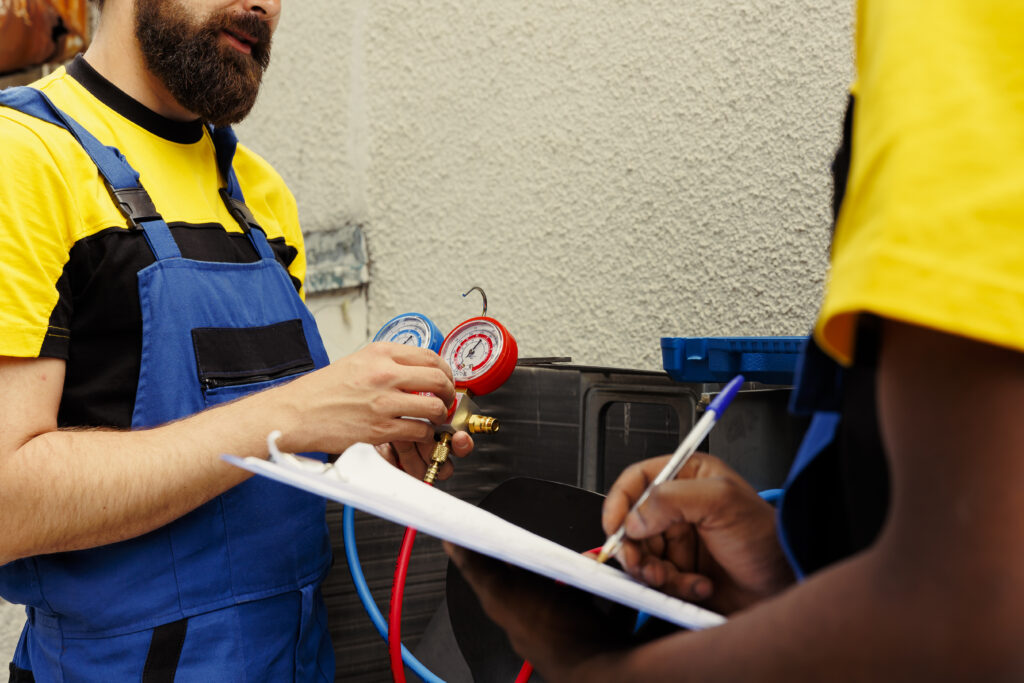
Common Problems Caused by Damaged Insulation
Cracked or missing insulation creates multiple operational issues. The most visible problem is excessive condensation forming on exposed copper pipes. This moisture drips onto floors, ceilings, and walls, causing structural damage over time.
Damaged insulation also leads to ice formation on refrigerant lines. When pipes lose their protective layer, the refrigerant inside becomes too cold and freezes moisture from surrounding air. Additionally, exposed pipes develop corrosion faster when constantly wet from condensation.
Types of AC Pipe Insulation Materials
- AC Copper Pipe Insulation – Durable and Reliable
AC copper pipe insulation uses specialized materials that can withstand temperature extremes and UV rays. Closed-cell foam provides excellent thermal resistance while remaining supple during installation. This type of insulation fits closely around pipes and maintains its shape even when there are bends or angles in the line set.
Copper pipes require insulation that will not break down from contact with metal. Quality materials can last for 10-15 years under normal conditions. Good materials also resist moisture absorption, which would diminish their insulating effects over time.
- Foam and Rubber Insulation Options for Better Protection
Polyethylene foam provides low-cost protection with good temperature resistance. The foam comes in pre-slit tubes that fit easily over existing pipes when installing or replacing. This material is ideal for indoor applications where exposure to ultraviolet forces is not an issue.
Rubber insulation offers excellent durability for outdoor installations. It does a better job handling sunlight and variations in atmospheric condition than standard foam type products. The flexibility of the material is retained during cold weather and the protective quality remains in intense heat.
Choosing the Right Material Based on Climate
Hot, humid climates require insulation with excellent moisture resistance. Closed-cell materials prevent water vapor from penetrating and degrading the protective layer.
Cooler regions can use standard foam insulation effectively. The key consideration is UV resistance for any pipes exposed to direct sunlight. Black rubber insulation absorbs heat, so lighter colors work better for pipes in constant sun exposure.
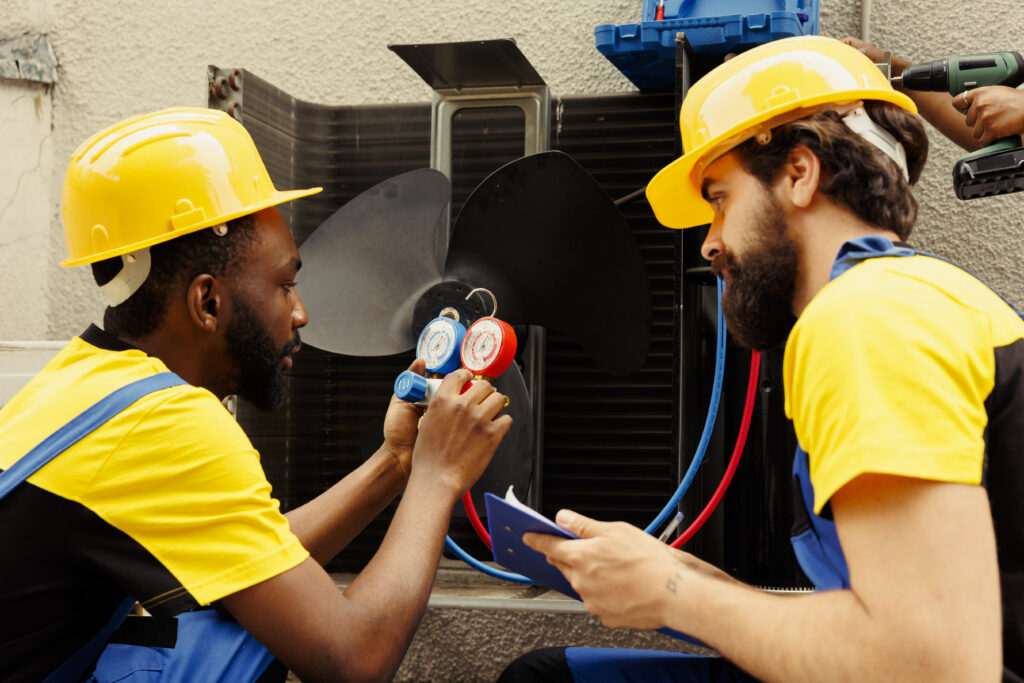
Common Issues with AC Pipes
Why Air Conditioner Pipe Gets Frozen
When you find a frozen air conditioner line, it means your system has potentially significant problems. Low refrigerant levels can cause the evaporator coil to run too cold, causing moisture to freeze on the lines attached to it. Additionally, dirty filters have the potential to restrict airflow and allow less heat to be absorbed, which also leads to ice forming on the apparatus.
Poor insulation gives ambient moisture a chance to freeze on cold refrigerant lines instead of allowing these surfaces to be at the proper temperature to circulate moisture in the cooling process. When this is happening, it shows that there is a layer of ice on the outside of the pipes rather than an internal system problem. Regardless of where ice forms, the build-up is now inhibiting the proper transfer of heat, which significantly limits your cooling capacity.
How AC Drain Pipe Blockages Affect Cooling
The ac drain pipe removes condensation collected during the cooling process. When this pipe clogs with algae, dust, or debris, water backs up into the drain pan. Overflow can trigger safety switches that shut down the entire system.
A blocked drain pipe creates humid conditions inside the air handler. This moisture encourages mold growth and reduces air quality throughout your space. Regular drain line flushing prevents these issues and maintains proper water removal from the cooling cycle.
Signs Your AC Pipe Fitting Needs Replacement
Loose or corroded ac pipe fitting connections cause refrigerant leaks and system failures. Visible oil stains around joints indicate refrigerant escaping through damaged fittings. You might also notice reduced cooling performance or hear hissing sounds near connection points.
Corroded fittings develop from moisture exposure over many years. White or green residue on copper joints shows chemical reactions breaking down the metal. These connections require immediate professional attention to prevent complete system breakdown.
Easy Maintenance Tips for AC Pipe Insulation
Regular Inspection for Cracks and Moisture Damage
Establish a routine for every month, where you will visually check all accessible pipe insulation. Look for cracks or tears and check for areas where the insulation has pulled away from the surface of the pipe. Pay particular attention to areas where pipes are bent or where the pipe connects to equipment.
Be on the lookout for wet spots or water stains indicating a condensation issue. Run your finger along the seams of the insulation; if you feel moisture that you cannot see, your protective layer is not operating effectively and needs to be addressed.
Cleaning and Replacing Worn-Out Insulation
Remove dirt and debris from insulation surfaces using a soft brush or cloth. Avoid using harsh chemicals that might degrade foam or rubber materials. For stubborn stains, mild soap and water work effectively without causing damage.
Replace any section showing significant wear, compression, or UV damage. Cut new insulation to match ac copper pipe sizes exactly for a snug fit. Seal all seams with weatherproof tape designed for HVAC applications to prevent air gaps.
Preventing Sun and Heat Damage on Outdoor Pipes
The primary cause of insulation material degradation is prolonged exposure to direct sunlight compared to any other environmental factors. UV radiation causes foams to become brittle and crack within 2-3 years in an unprotected location. To increase the lifespan of outdoor insulation, either paint it with UV resistant coating or wrap it with reflective tape.
When possible, install shade type structures over exposed pipe runs. The lifespan of insulation material is increased in the shade, even if only partial shade. If you are performing a significant upgrade, you may also need to consider relocating your pipes to the shading zones of your building structure if applicable.
Upgrading and Measuring AC Copper Pipe Sizes
How to Identify Correct AC Copper Pipe Sizes
AC copper pipe sizes follow standardized measurements based on system capacity. Measure the outside diameter of existing pipes using calipers for accurate readings. Common residential sizes range from 1/4 inch to 7/8 inch depending on tonnage.
The larger suction line returns low-pressure refrigerant to the compressor. The smaller liquid line carries high-pressure refrigerant to the evaporator coil. Mismatched insulation creates gaps that allow heat transfer and condensation formation.
When to Upgrade Your AC Pipe Insulation
Every 10-12 years, replace insulation, regardless of its condition, because the materials break down internally before they exhibit any visible exterior signs. In the circumstance when we have storms, floods, or substantial leaks, have all insulation inspected and replacement completed without delay.
When replacing any existing system with a more efficient model that runs at different temperatures from the previous unit, upgrade your insulation. A newer system will likely require thicker insulation than the A/C did before. Sea Breeze A/C Maintenance Services UAE can confirm whether your existing insulation meets the requirements of your new equipment.
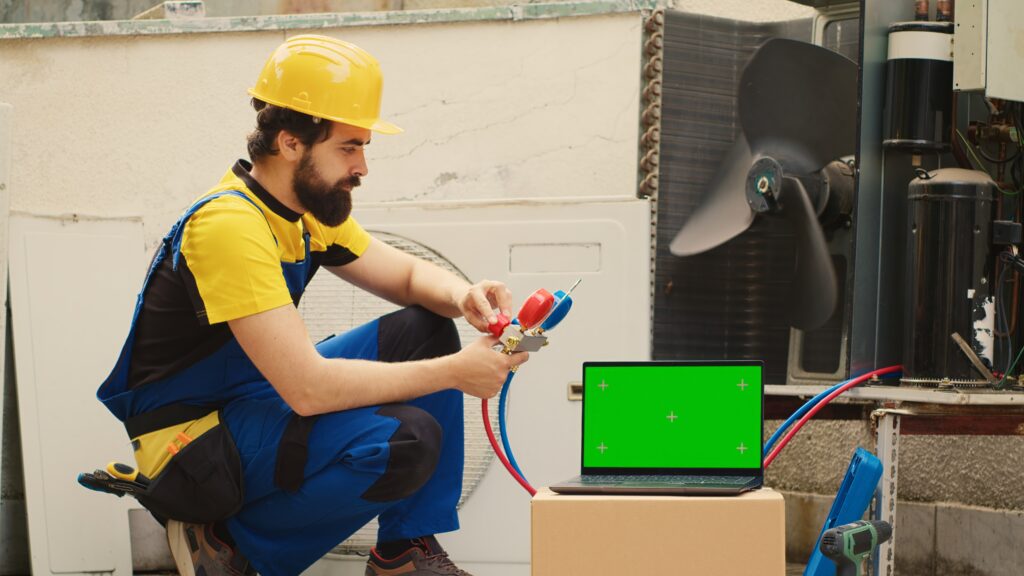
DIY vs. Professional AC Pipe Fitting Options
Changing insulation is straightforward, it is a good DIY project for those who have confidence and basic tools. Pre-slit foam tubes need no special tools to install. Don’t forget to seal the joints and secure the insulation with appropriate tape or ties.
In all other situations that involve refrigerant lines to the unit, then you must involve a professional. Any connection on the AC pipe fitting, like the tubing connection, typically requires braising and a pressure test. It will be the qualified technician that ultimately checks the required charge level of refrigerant after pipe work has been completed.
Preventive Measures to Extend the Life of AC Pipe Insulation
Keeping AC Drain Pipe Clear for Efficient Performance
Flush your ac drain pipe quarterly using a bleach-water solution or specialized cleaning tablets. Pour the mixture into the drain pan and let it work through the line. This prevents algae growth that causes blockages and overflow issues.
Install a drain pan overflow switch if your system lacks one. This safety device shuts down the unit before water damage occurs. Check the condensate line outlet monthly to confirm water flows freely during operation.
Using Weatherproof Covers for Outdoor Pipes
Use PVC covers or weatherproof jacketing to protect outdoor pipe insulation. This type of protection prevents foam and rubber from being exposed directly to the elements and being punctured by birds, rodents, or insects searching for nesting materials.
Mount the covers snugly, so they do not become dislodged from wind, and still allow for thermal expansion of the insulation. Be sure to leave small vent holes to prevent moisture from getting trapped in between the protective layers. Always replace any damaged protective covers or jacketing right away to keep continuous protection of your pipe insulation.
Scheduling Routine AC Maintenance Checks
Professional maintenance visits catch insulation problems before they cause system damage. Technicians inspect hidden areas homeowners can’t easily access. They identify early signs of wear that indicate replacement needs.
Schedule service twice yearly for peak performance. Spring checks prepare your system for summer cooling demands. Fall inspections ensure everything remains protected through milder months.
Frequently Asked Questions
How often should I replace AC pipe insulation?
Replace insulation every 10-12 years or immediately when you notice cracks, compression, or moisture damage affecting performance.
Can I use regular foam pipe insulation on AC copper pipes?
No, use insulation specifically rated for refrigerant temperatures. Regular plumbing foam doesn’t handle the cold temperatures or prevent condensation effectively.
What causes my air conditioner pipe to freeze in summer?
Low refrigerant, dirty filters, blocked airflow, or damaged insulation allow excessive cold to freeze moisture on pipes during operation.
How do I know what size insulation I need for my AC pipes? Measure your pipe’s outer diameter and choose insulation with matching inner diameter. Wall thickness should be at least 1/2 inch for proper protection.
Is it normal for my AC drain pipe to drip constantly?
Yes, condensation removal is normal during cooling. However, excessive dripping or water pooling indicates blockages needing professional cleaning.
Can damaged pipe insulation really increase my electricity bill?
Absolutely. Poor insulation forces your compressor to run longer cycles, potentially increasing energy costs by 20-30 percent monthly.
Should I insulate both the supply and return AC pipes?
Yes, both refrigerant lines need insulation. The cold suction line prevents condensation while the liquid line maintains refrigerant temperature.
What’s the best way to protect outdoor AC pipe insulation from sun damage?
Apply UV-resistant coating, use reflective tape wrapping, or install PVC covers that shield insulation from direct sunlight exposure.
Keep Your System Running Smoothly
Taking care of your AC pipe insulation can help you avoid expensive repairs and maximize your cooling system’s efficiency. Keeping up on inspections, timely replacement, and effective protective treatments will prolong the life of your pipe insulation, while lowering your energy bills. These simple tasks save you cash and keep your house comfortable all of the time.
Now that you understand how to take care of your AC pipe insulation, are you ready to make sure your cooling system continues to provide reliable cooling for many years to come?
AC Maintenance UAE Team
Welcome to AC Maintenance UAE, your reliable partner for complete air conditioning repair and maintenance services in Dubai, Sharjah, and Abu Dhabi. We are strongly dedicated to excellence and deliver efficient and reliable services to keep your cooling systems performing at their best.


